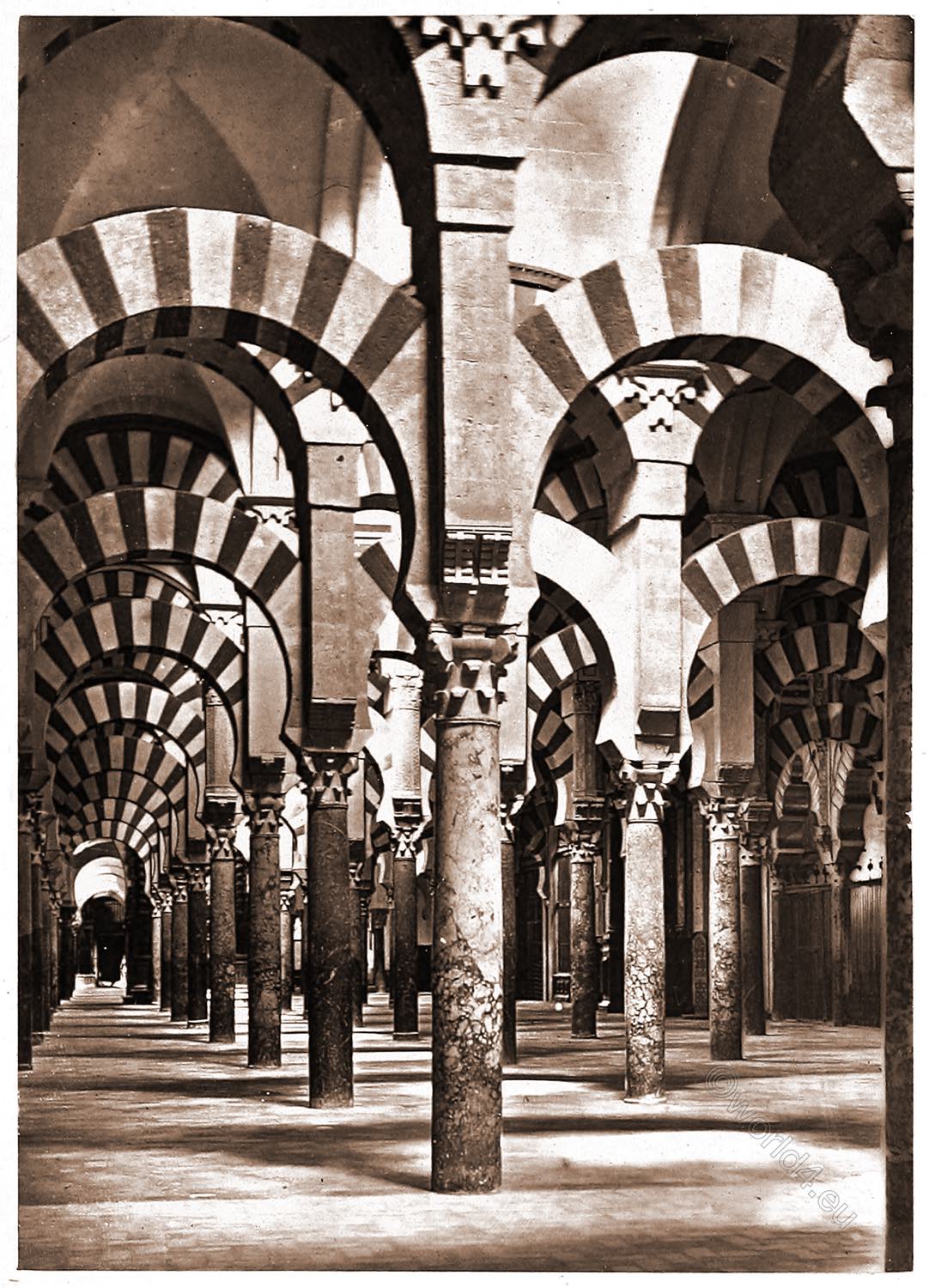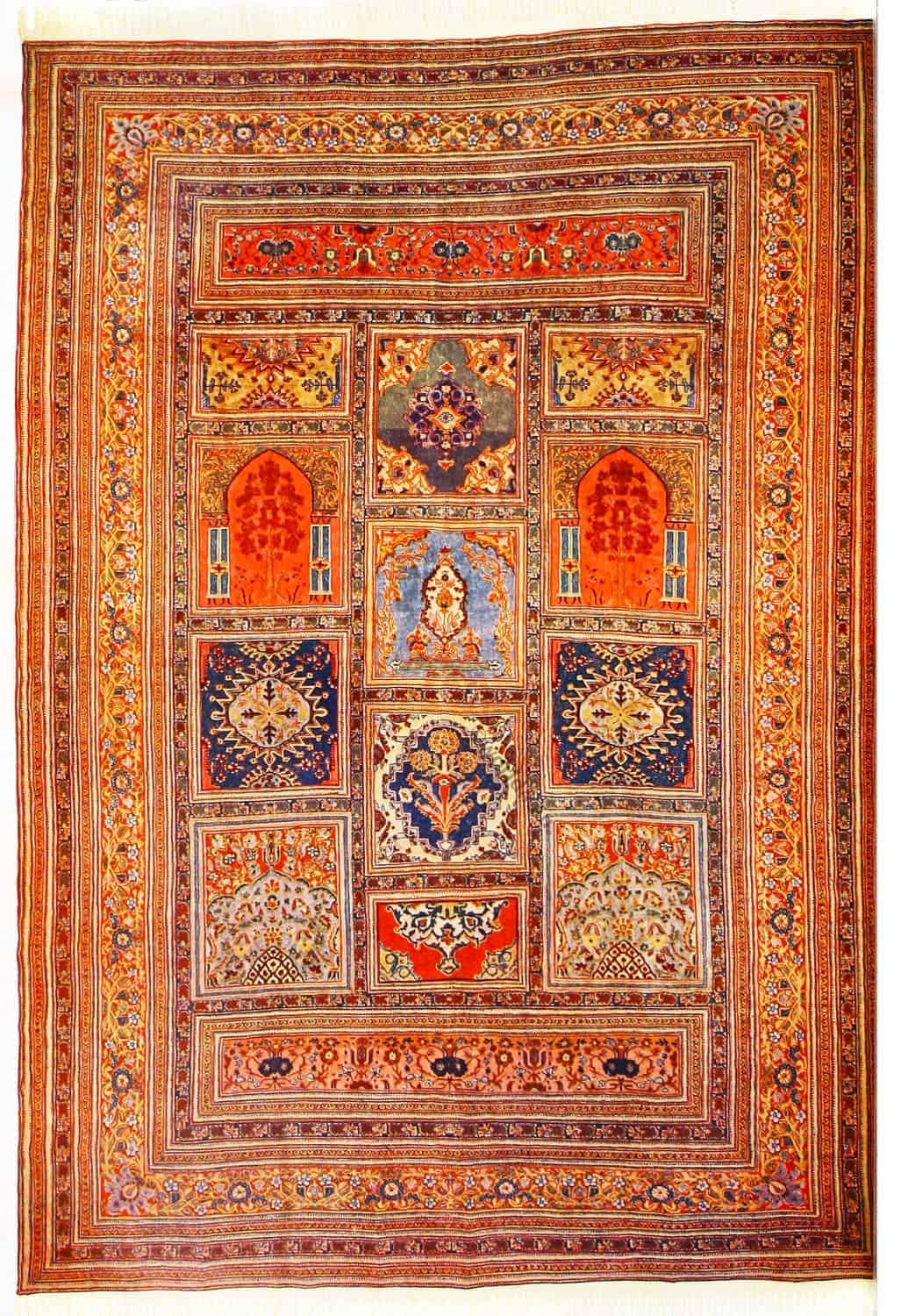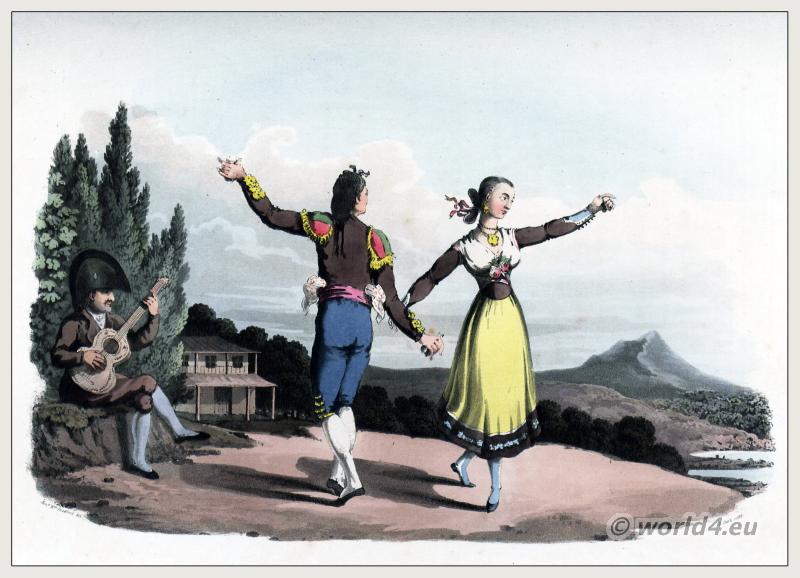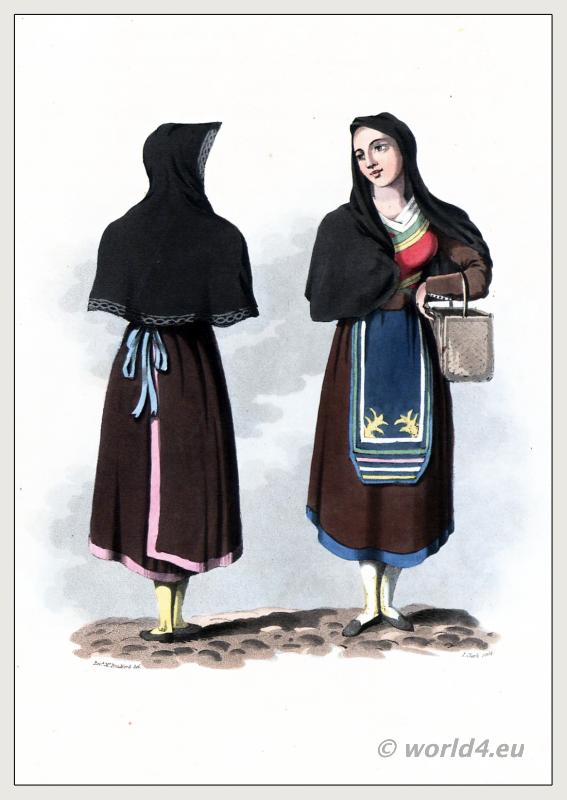
INTERIOR OF THE MOSQUE AT CÓRDOBA.
AMONGST the greatest wonders of architecture may well be ranked the great Mosque of Córdoba, although the beauty of this strange building is not now such as it was in the days of the Kaliph, having under Charles V. had its grandest effects destroyed by a choir erected by the direction of the Chapter of Córdoba, to make room for which, sixty of the beautiful columns were taken away; thus arresting the view in all directions and utterly spoiling the general effect.
When Charles V. visited Córdoba some three years afterwards, and saw the mischief the monks had done, he is reported to have said, “You have built here what you, or anyone might have built elsewhere, but you have destroyed what was unique in the whole world. You have pulled down what was complete, and have begun what you cannot finish.”
With the exception of the central portion alluded to, the eye wanders over innumerable arches stretching far into the distance, supported by graceful columns of marble, jasper, and porphyry, which suggest to the mind a strong resemblance to a forest of pine trees.
The Mosque of Córdoba dates as far back as the year 770, and when originally constructed must have been of wonderful beauty. Mr. B. Edwards, in his” Journey through Spain to the Sahara,” thus describes it:
“To have seen the Mosque of Córdoba forms an era in one’s life. It is so vast, so solemn, so beautiful. You seem to be wandering at sunset time in a large and dusky forest, intersected by regular alleys of tall, stately palms. No matter in what direction you turn your face, northward, southward, eastward, westward, the same beautiful perspective meets your eye, file after file of marble and jasper columns supporting the double horseshoe arch. Nothing can be more imposing, and at the same graceful, than this arrangement of transverse aisles; and the interlaced arches, being delicately colored in red and white, may not inaptly be compared to foliage of a palm forest, flushed with the rays of the setting sun. If so impressive now, what must this place have been in the glorious days of Abdur-rahman (Abd ar-Rahman III. (912–961)), the Al Raschid of Córdoba, when the roofs blazed with arabesques of red and blue and, ‘patines of bright gold;’ the floors were covered with gorgeous carpets, and the aisles swarmed with thousands of worshippers in their bright Eastern dresses! The richest imagination cannot even paint the scene, the readiest fancy cannot embellish it; and only those who have imbibed the rich colors of the East can close their eyes and dream of it.
When the dream is over, cast your eyes along the long lines of columns, and you will see where the shoulders of spectators and worshippers of ages have left an enduring mark – a touching sight! and then go into the once exquisite, Maksara, or Caliph’s seat, and weep to see what becomes of beautiful things in Spain.”
W. B. WOODBURY.
Source: Treasure spots of the world: a selection of the chief beauties and wonders of nature and art by Walter Bentley Woodbury (1834-1885); Francis Clement Naish. London: Ward, Lock, and Tyler, Paternoster Row, 1875.
Related
Discover more from World4 Costume Culture History
Subscribe to get the latest posts sent to your email.






